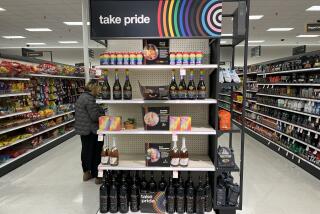First drive: 2012 Porsche 911 Carrera S
- Share via
You’ve seen the spy shots, you’ve read the breathless speculation and if you visit this year’s L.A. Auto Show where the 2012 Porsche 911 makes its North American debut, heck, you can smear your grubby hands all over the new taillights.
But what really matters is how does it drive?
Very well actually. But saying a Porsche 911 drives well is like saying Einstein could do long division. So let’s explore some details about the 991 to give its driving experience some context before we hit the road.
The 2012 911 is known internally at Porsche, and to those bowing at the altar of the iconic German automaker, as the 991. The biggest change from the 991’s predecessor, the 997, is efficiency and growth.
The wheelbase itself is about 3.9 inches longer, with the body growing 2.2 inches. This means the car’s overhangs are shorter as the wheels are essentially pushed closer to the corners of the 991. A key reason for this added length is an increased stability at high speeds, something drivers of the 997 will tell you they would appreciate.
Covering these new dimensions is all-new sheet metal. The front looks nearly identical to the 997’s on paper, but in person the 991 front wears a patina of refinement that the 997 lacks. But it’s still a bit too conservative for my taste. Meanwhile the back of the 991 is seductively graceful with thinner, longer LED taillights. If only Porsche designers had managed to capture the allure of the 991 rear and apply it to the front.
Inside, the 991 takes a quantum leap forward. The center stack is now nearly identical to that of the Cayenne and Panamera, with much of the chrome-trimmed switch gear for the heating and cooling pushed to the center console between the two front passengers.
The 911’s familiar five-gauge cluster still greets the driver with the tachometer in the center, though one of the clusters is now a full-color, multifunction screen that will feed drivers data including a g-force meter, navigation instructions and a trip computer. The 991 interior gives drivers about an inch of additional legroom, with rear passengers getting more than half an inch added on (it’s still very tight for rear passengers).
In addition to being larger, the 991 also grows in terms of power. The car I drove was the 911 Carrera S, which is powered by a 3.8-liter, direct-injected, six-cylinder engine. It puts out 400 horsepower and 325 pound-feet of torque, each figure a gain of 15 over the outgoing Carrera S.
That maximum horsepower now comes at 7,400 rpm, up from the previous maximum for the S of 6,500 rpm, while the motor now redlines at 7,800 rpm.
The base Carrera actually gets a smaller engine than the previous 911, with a 3.4-liter flat six putting out 350 horsepower and 287 pound-feet of torque. That’s a gain of five horsepower and a loss of one pound-foot of torque from the old 3.6-liter unit.
Routing this power to the rear wheels is one of two noteworthy transmissions.
The one getting the most attention is the 991’s base transmission; the world’s first seven-speed manual transmission for a car. Yes, that’s right; just as you were acclimating yourself to rowing through six forward gears, now Porsche has gone and thrown a seventh at you.
But they’ve engineered it for us noobs who might otherwise be worried about mis-shifting, from say, fourth to fifth and accidentally catching that errant seventh gear. A shift lock is in place such that drivers can get to seventh gear only from fifth or sixth.
This seventh gear is really just an overdrive gear with an eye toward efficiency; the first six are for daily driving and drivers hit top speed in sixth gear. Seventh is for freeway or autobahn cruising and the 991’s performance in the final gear demonstrates this as there isn’t a lot of power available.
Also new, for this driver at least, was a start-stop function on a manual transmission. Come to a stoplight, shift the car into neutral and take your foot off the clutch: The engine turns off. Step back on the clutch and the engine fires back up immediately. Cool, but eerie.
If rowing your own gears doesn’t appeal to you, check out Porsche’s optional and improved dual-clutch automatic transmission, known as Porsche Doppelkupplungsgetriebe (I think I have his hockey jersey), or PDK.
Both quicker shift times and smoother gear changes are noticeable when compared with the 997’s PDK. Porsche says a new 911 Carrera S with this gearbox and the optional Sport Chrono package will accelerate from 0 to 62 mph in the same 4.1 seconds as the previous 911 S could. After numerous attempts at this in the new 991, 4.1 seconds seems conservative; sub-four second times are entirely possible.
The PDK on the 991 also has a coasting function, similar to that found on Porsche’s Cayenne Hybrid. This system disengages the engine, though the engine stays running, during freeway cruising when no pressure is on the throttle or light pressure is on the brake pedal.
It’s an intelligent system, too, so it monitors the speed with which you pull your foot off the gas; do so quickly and it won’t engage the coast feature because it assumes you’re in the middle of spirited driving. Do so slowly, and the transmission disengages the engine.
If you’re noticing a trend toward efficiency in this 991, that’s no accident. Much of this car was designed with an eye on both European and American fuel economy standards, which are only getting more demanding.
One of the biggest victims in the advancement of the efficiency ethos is the 991’s steering. Previous iterations had a hydraulic steering system that Porsche claimed was the world’s best. If it wasn’t, it certainly was somewhere in the top three. Yet because of the aforementioned and ever-increasing efficiency standards, keeping this fuel-sucking system was never an option.
When I asked one Porsche official about it, he told me on no uncertain terms that the company “had to” switch to a more efficient system, which is an electro-mechanical setup. This will do little to assuage 911 purists who relished the connectivity to the road that the outgoing hydraulic system provided.
But the world kept turning and the 911s kept selling the last time Porsche subverted the devoted in 1997 by introducing the 996 with its water-cooled engine. Such is the price for progress.
On a happier note, the 991 sees some positive changes in the pursuit of efficiency; a lower curb weight. Despite the 991’s larger dimensions and increased features over the 997, a new Carrera S with the PDK transmission shaves almost 90 pounds from its predecessor for a total curb weight of 3,120 pounds. The base Carrera sees similar weight savings. Much of this weight loss comes from the extensive use of aluminum in the doors, roof, and deck lid.
So what kind of driving experience do all these changes add up to? An enjoyable but evolved one.
The 991 is not the 997. The engine note is smoother and more refined, yet just as loud the closer to its redline you push it. The PDK rips off shifts with startling quickness and with the transmission in normal mode, the shifts are nearly seamless. Putting it in Sport (which is now standard on all 991s) or the optional Sport Plus (part of the Sport Chrono package) adds throaty throttle-blipping on the downshifts.
The manual transmission shifter has precise, short throws to it, while the clutch pedal has an encouraging spring to it and engages with short travel. Third gear is deliberately tall and it’s a wonderfully practical place to leave the shifter during tight canyon driving; it has all the torque you need to pull you out of a turn yet the driver can get plenty of speed without needing to shift into fourth.
The wider track and immensely sticky Pirelli P Zero tires (they’re 295/30 ZR20’s in the rear of the Carrera S) provide plenty of grip through turns. Porsche’s first-ever use of active roll stabilization on a 911 (it’s on the Cayenne and Panamera) minimizes, but doesn’t eliminate, body roll.
And then there’s the steering. Swing and a miss. It’s good — cue asterisk the size of Barry Bond’s bald head — for what it is. It’s not the same as the hydraulic setup; it’s too synthetic and it sends too little feedback to the driver’s hands.
If you can overlook the 991’s steering foible (and some won’t), budget $83,050 for the Carrera with the seven-speed manual and $97,350 for the Carrera S, including destination.
The 991 will go on sale in February. Look for a full drive and review then. Until then, sate your Porsche desires at the company’s booth at the L.A. Auto Show.
Just make sure you wash your hands before touching.
david.undercoffler@latimes.com
More to Read
Inside the business of entertainment
The Wide Shot brings you news, analysis and insights on everything from streaming wars to production — and what it all means for the future.
You may occasionally receive promotional content from the Los Angeles Times.











